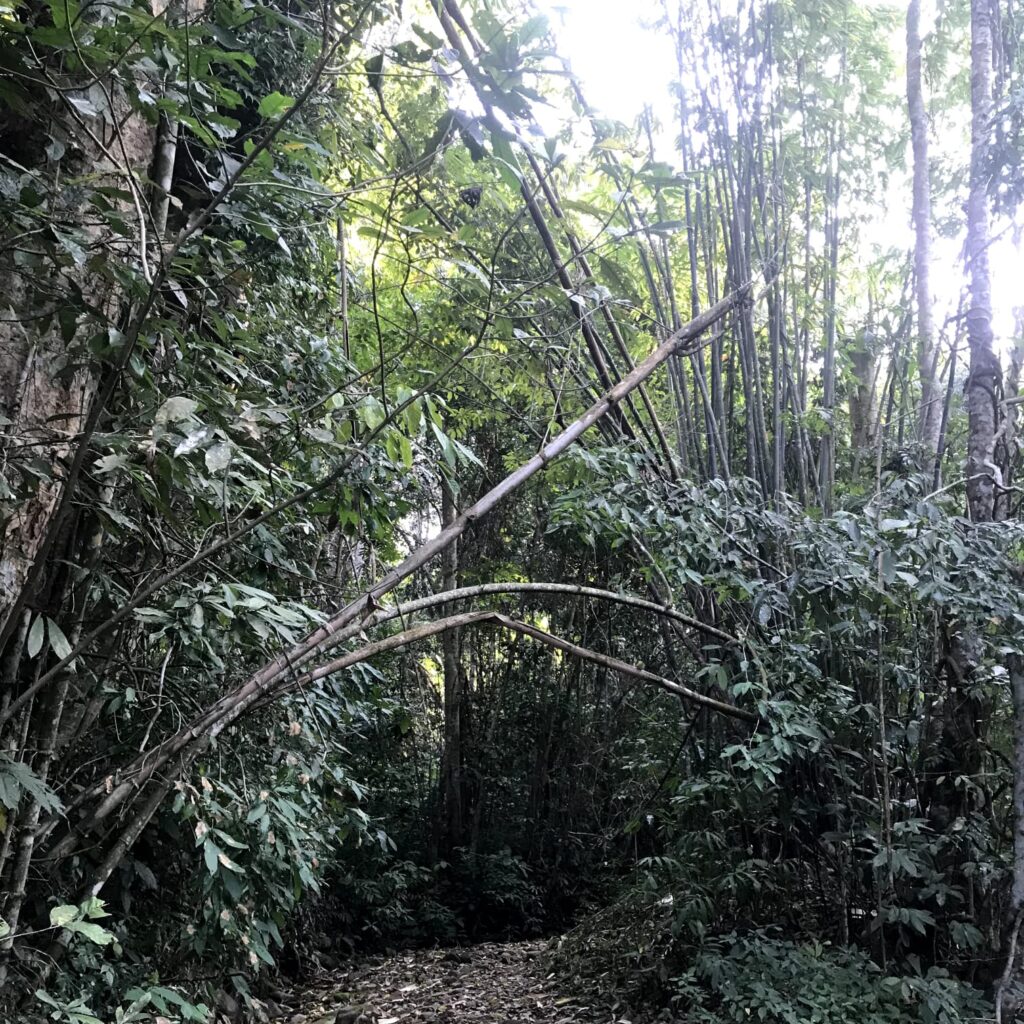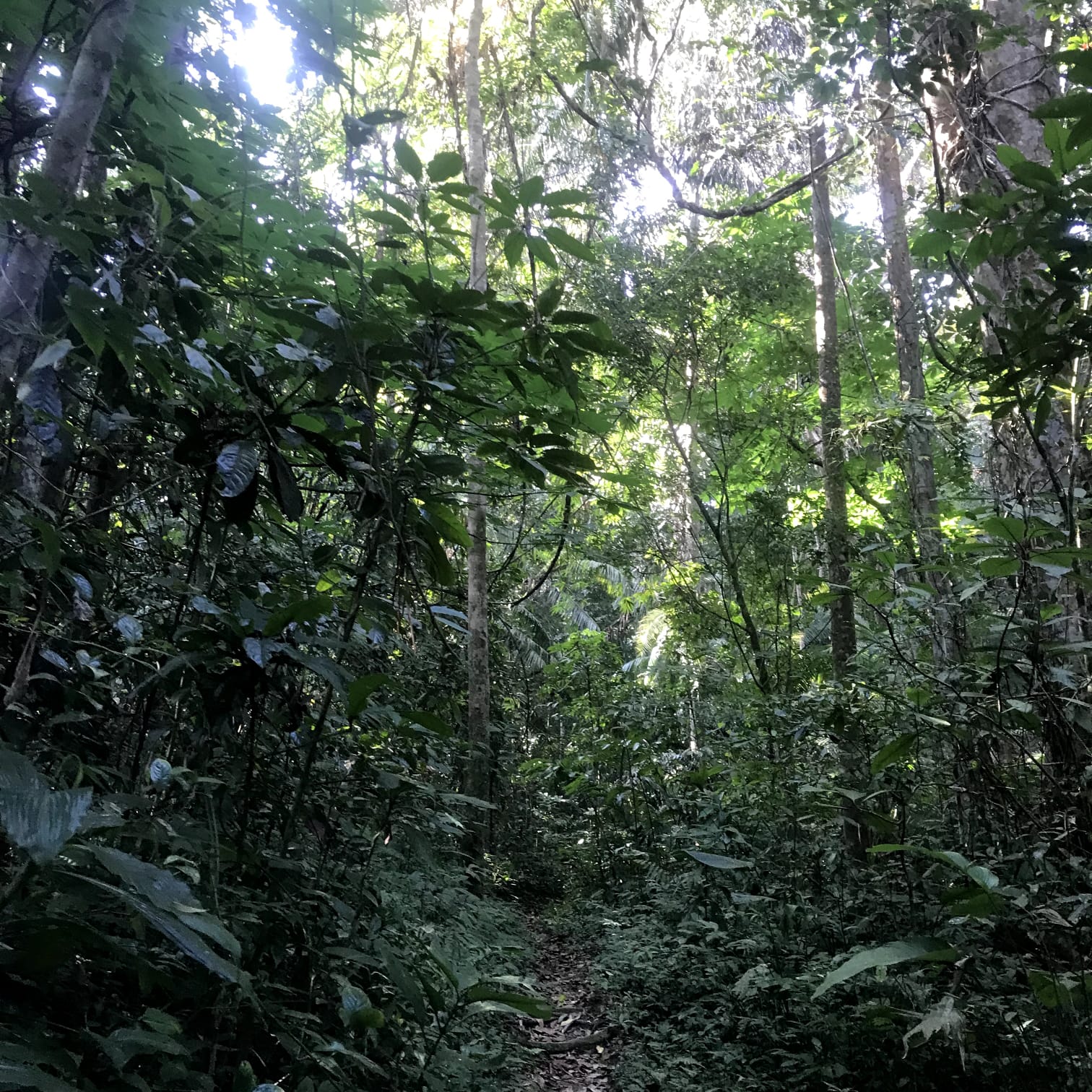by Ritu Gajbhiye
A dense canopied old growth forest with tall trees intertwined with vines and creepers. A melody of bird calls harmonizing with the howls of the Hoolock Gibbons. This was experienced by Ms. Vianney Ch Momin, a researcher with the Sacred Earth Trust in Selbalgre, Meghalaya as part of a research project titled “Sacred Groves: Potential for biodiversity conservation in West Garo Hills, Meghalaya. A study by Tiwari et al. (1998) which covered 79 sacred forests in Meghalaya, ranging from 0.01 to 900 ha in size, and found that the species diversity was much higher in sacred forests than in disturbed forests, highlighting the role of sacred groves in biodiversity conservation.
The concept of sacred grove conservation is of cultural and spiritual importance worldwide. In Meghalaya, it is an indigenous knowledge system conserved by the tribal people of the state. The belief that sacred groves are dwelling places of deities is prevalent among many tribes of Meghalaya. They believe that the deity bestows well-being to the tribal community, their livestock and property and keeps the evil spirit away. The indigenous people believe that their Gods and spirits present in the sacred groves (forest) would be offended if they cut the trees, or if fruits and flowers are plucked (Jeeva et al., 2006). Sacred groves have often been studied from a floristic and faunal diversity point of view but the community aspect has been under-represented. Traditionally, local communities and their taboos and myths attributed to the conservation and preservation of sacred forests
Among biodiversity conservation, sacred groves are considered as one of the best practices used by the indigenous cultures, which are associated deeply with the culture and religion (Upadhyay et al., 2019). Site-specific conservation strategies need to be evolved considering the status of the grove and socio-economic conditions of people responsible for its management (Tiwari et al., 2011).
The purpose of the project titled “Sacred Groves: Potential for biodiversity conservation in West Garo Hills, Meghalaya” was to study the role of traditional knowledge and belief system in the conservation of sacred grove biodiversity. An assessment of the phytosociology and biomass storage of tree species was also conducted
The field survey was carried out in 6 sacred groves of West Garo Hills, Meghalaya from the villages of Barijong, Magalpara, Selbalgre, Rengsangre, Bolbokgre and Sadolpara. A phytosociological study of the tree structure and biomass estimation was conducted. Identification of tree species was done with the help of the local communities, guides, and other available literature. Biomass and Carbon stocks of woody vegetation were assessed using a non-destructive method. A questionnaire was designed to conduct semi-structured interviews with the local people.


The study gave us insights into the traditions, taboos and customs associated with the groves. It also confirmed that the conservation of sacred groves is of vital importance for preserving the ecological diversity, culture, and traditional practices of the ethnic and indigenous communities in West Garo Hills. While sacred groves have been protected to a great extent in this region, however, degradation is evidently occurring due to the gradual loss of associated belief systems (conversion to other religions), excessive use of NTFP & developmental activities. A dedicated Sacred grove conservation program under protected area network program is necessary
The present study supports the following conclusion:
- sacred groves are traditionally conserved forest with high tree density due to the cultural protection by local communities, less disturbance from anthropogenic activities, and restrictions on timber extraction and other resources
- Tribal communities identified taboos on use of resources in the sacred groves, consequences of breaking the taboos, and the frequency and types of rituals associated with the sacred groves. Taboos exist that restrict them from spitting or peeing inside the grove, cutting trees, grazing, hunting, taking in anything from the grove, not even a leaf nor leave anything behind, killing of any living organism (including flies, mosquitoes & beetles etc). The belief system and the associated rituals were found to be centred around the sacred groves
- Among the sacred groves studied, Selbalgre sacred groves stores more carbon than the other sacred groves studied. Overall, sacred groves can contribute significantly to biomass carbon stock management, and
- Further studies are required to explore how the traditional communities who manage these forests can benefit under (REDD) programs




